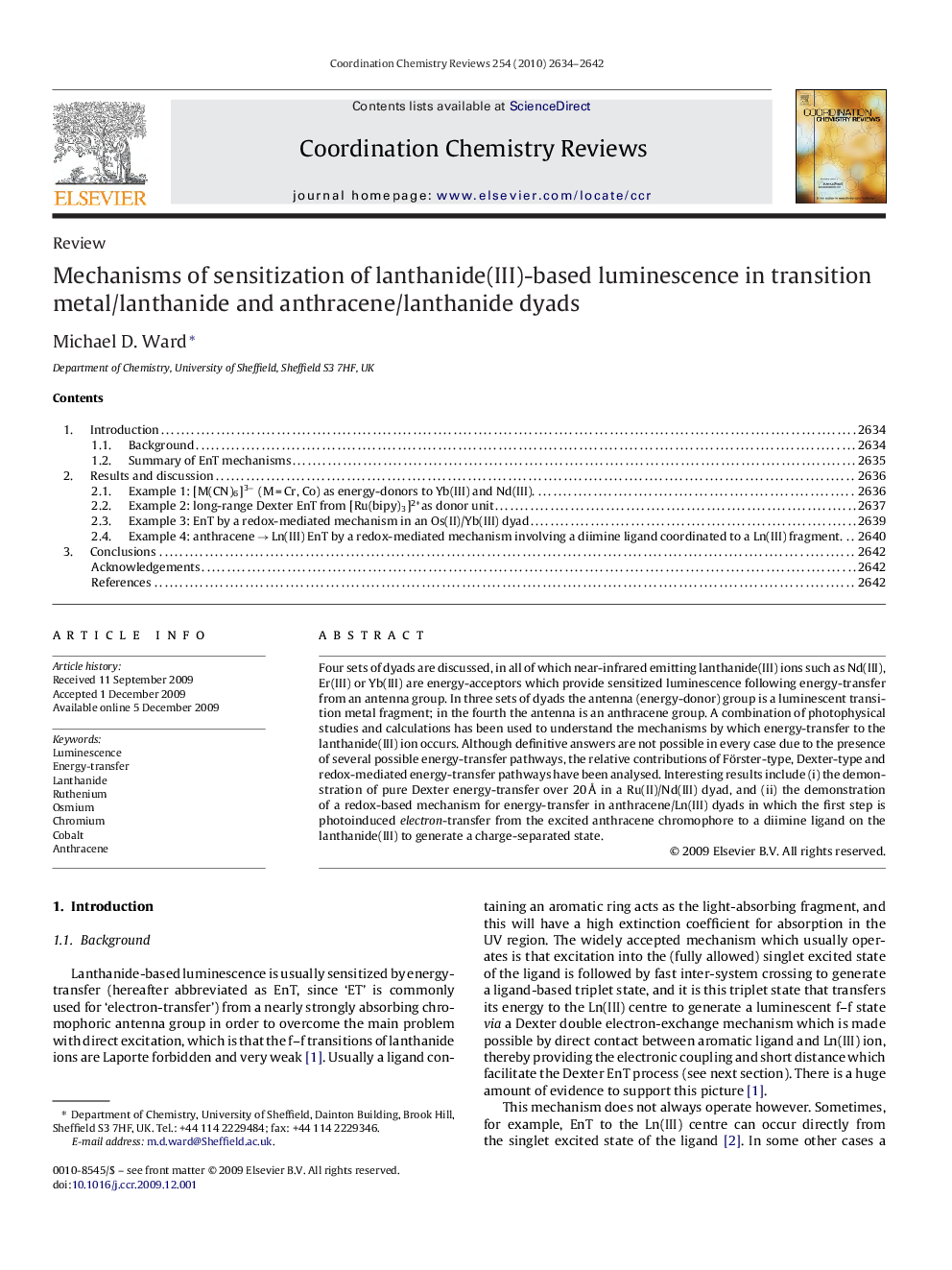| Article ID | Journal | Published Year | Pages | File Type |
|---|---|---|---|---|
| 1299814 | Coordination Chemistry Reviews | 2010 | 9 Pages |
Four sets of dyads are discussed, in all of which near-infrared emitting lanthanide(III) ions such as Nd(III), Er(III) or Yb(III) are energy-acceptors which provide sensitized luminescence following energy-transfer from an antenna group. In three sets of dyads the antenna (energy-donor) group is a luminescent transition metal fragment; in the fourth the antenna is an anthracene group. A combination of photophysical studies and calculations has been used to understand the mechanisms by which energy-transfer to the lanthanide(III) ion occurs. Although definitive answers are not possible in every case due to the presence of several possible energy-transfer pathways, the relative contributions of Förster-type, Dexter-type and redox-mediated energy-transfer pathways have been analysed. Interesting results include (i) the demonstration of pure Dexter energy-transfer over 20 Å in a Ru(II)/Nd(III) dyad, and (ii) the demonstration of a redox-based mechanism for energy-transfer in anthracene/Ln(III) dyads in which the first step is photoinduced electron-transfer from the excited anthracene chromophore to a diimine ligand on the lanthanide(III) to generate a charge-separated state.
